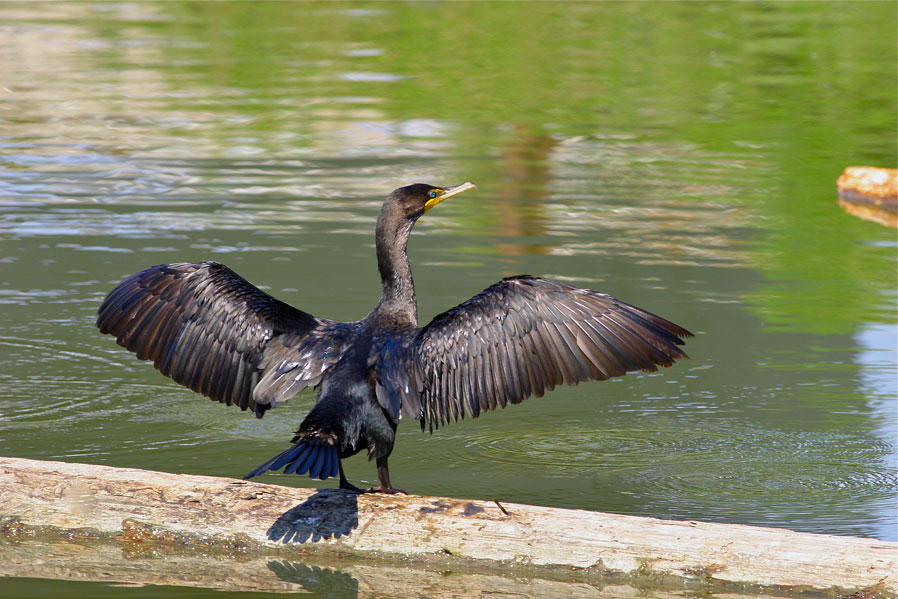A double-crested cormorant (Phalacrocorax auritus) dries its wings in the Keating Channel last week. © BCP 2010
Well. Here is the bird that everyone loves to hate, minding its own business in the Keating Channel last week. Not bothering anyone, just drying its wings mid-morning in the intense heat of a blazing late summer sun. (I took this photo before the current chilly rainy period set in.)
Of course, there are few folks around the Big Smoke that don’t recognize the much reviled double-crested cormorant (Phalacrocorax auritus) when they see one. They’re so big. So black. So uncute. So destructive.
The haters might say, “How appropriate! The ugliest bird around, photographed in one of the city’s most derelict, ugliest locations — the Keating Channel.” (That’s the concrete sluice that replaced the natural mouth of the Don River, the channel that now connects the Lower Don River to our lake.)
But plenty of other folks, including me, enjoy watching these big birds that look prehistoric somehow. Like they’re the long lost relatives of Archeopteryx. Like they should have been extras in the film Jurassic Park. But there’s plenty to like about these birds. I love, for example, how they fly in formation so low over the lake it looks as if they might crash into it. I love how they dry their wings.
But I’m all too aware that these birds are hugely controversial. People rightly accuse the cormorant colonies on the Leslie Street Spit of destroying trees and thus the habitat of other animals in the park. (Think guano.) And they each eat about a pound of fish per day, disrupting the food source of other animals. Many thoughtful people feel they should be humanely culled.
Leslie Scrivener, one of this city’s finest feature writers, clearly explained both sides of the cormorant debate in an article in the Toronto Star dated May 20, 2009. You can read her well-balanced article by clicking here.
I’ll let others who know more about the cormorant debate decide how to control their exploding population. Meanwhile, I’ll keep watching these big black birds as they do what comes naturally — fishing, preening, drying, socializing. Oh yeah —and excreting vast quantities of guano.
© BCP 2010




1 comment